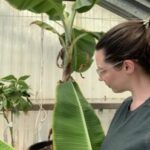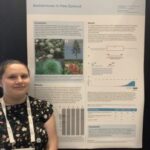Integrated or not? Is this badnavirus viable and what is the risk?
Badnaviruses infect a wide range of plants across several horticultural sectors, where infection can result in significant production losses.
Badnaviruses, like other genera in the family Caulimoviridae, have a circular double stranded DNA genome encapsidated into a virion. The genomes replicate by reverse transcription from a longer than genome length RNA molecule. Integration into the host genome is not part of their standard replication cycle. However, complete functional viral genomes have been found integrated into the genomes of many monocot and dicot host plants.
This integrated form can remain inactive for a long time but under certain environmental biotic or abiotic stresses (e.g., tissue culture, grafting, changes in day length, heat, or water stress) it can excise and start replicating to cause disease. The stress triggers are unpredictable, thus generating significant challenges in a post entry quarantine environment (PEQ), which can be further confounded if the virus is exotic or unknown to science. It is a diagnostic challenge to determine the risk posed by integrated virus sequences.
This project aims to develop an assay compatible with existing Ministry for Primary Industries (MPI) Plant, Health & Environment Laboratory (PHEL) expertise and equipment that can inform decisions on the risk of a detected badnavirus beyond dependence on its simple presence or absence. Researchers are using two different strategies to selectively sequence badnavirus DNA from several plant samples and generated informative data. Analysis of the sequence data will enable improved risk assessment strategies to be used.
Applications for the assay could range from routine PEQ screening, to monitoring the spread of a virus, and pre-screening of material prior to plant breeding or tissue culture. Underpinning and beyond biosecurity, such a method could improve knowledge of the presence and form of badnaviruses in New Zealand native and horticulturally important plants which in turn could inform potential future tissue culture and conservation work.
Contact Project Leader Rebekah Frampton: [email protected]


